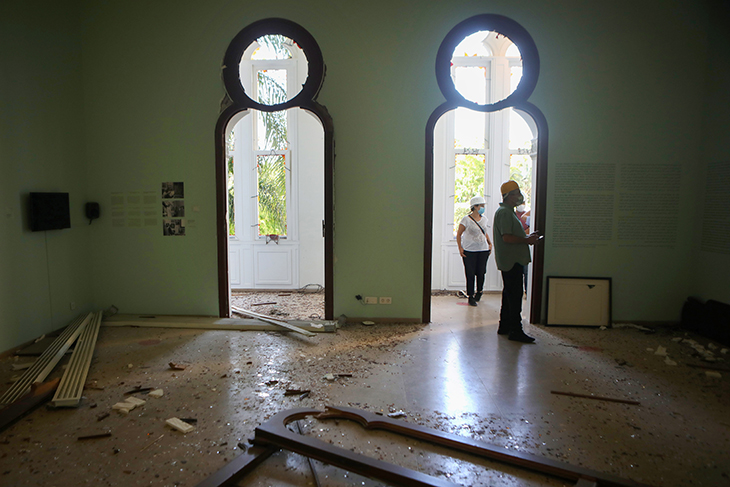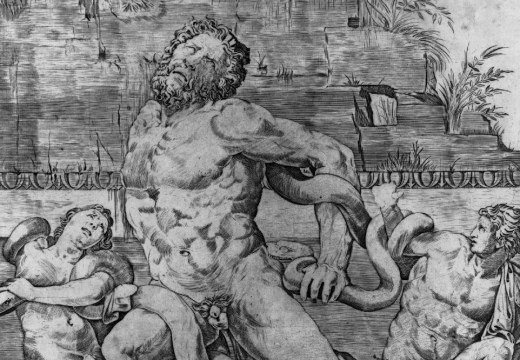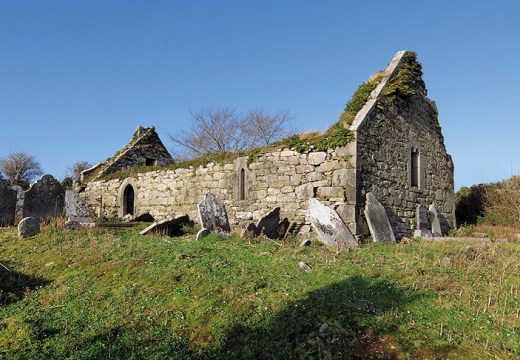A massive explosion in a warehouse at the port of Beirut on Tuesday evening, thought to be caused by some 2,750 tons of ammonium nitrate that had been stored at the site for six years, has killed at time of writing at least 145 people and injured more than 5,000. The devastating blast has destroyed or damaged half of the city, the governor of Beirut told reporters on Wednesday, and more than 250,000 people are displaced. Among the buildings caught up in the explosion are art galleries close to the port such as Marfa Gallery and Galerie Tanit, both of which have been destroyed, reports the Art Newspaper. Elsewhere in the city, Opera Gallery, Galerie Sfeir-Semler and Galerie Janine have also been damaged. The Sursock Museum, which reopened in 2015 after a lengthy renovation, has been severely damaged, says its director Zeina Arida: ‘It’s horrible to see five years of work in utter destruction – even during the civil war it wasn’t this bad.’
More than 7,000 people to date have signed an open letter from Southbank Centre employees and supporters, published on 31 July, criticising what is described as ‘a programme of brutal redundancies across the organisation’. The centre, which includes the Hayward Gallery, is currently undertaking consultations on proposed redundancies of up to two-thirds of its workforce, representing around 400 people. After a protest held last weekend, the Southbank Centre released a statement underlining the ‘catastrophic loss of 60% of our income’ that has necessitated these cuts. The statement also points to ‘inaccuracies contained within’ the open letter and pledges that the SBC will ‘remain transparent, open and honest’ with the organisation’s staff during the consultation process. The Southbank Centre is not the only organisation in the UK currently facing criticism: last week a protest was held outside Tate Modern against proposed cuts of up to 300 jobs at Tate Enterprises, the museum’s commercial arm.
Major museums in the United States are making further redundancies as a result of the coronavirus pandemic. Artnews reported on Wednesday that the Metropolitan Museum of Art is laying off 79 employees – and placing an additional 181 on furlough – in its second round of redundancies since the institution closed in March. Ninety-three workers have also accepted voluntary retirement, museum leadership has confirmed. Earlier in the week, on 3 August, the Met announced that all its internships will now be paid, thanks to a major gift. At the Philadelphia Museum of Art, 85 members of staff have been made redundant and 42 have accepted voluntary retirement, in a reduction of more than 20 per cent of the museum’s workforce. Two days after the announcement, an overwhelming majority of staff voted to form a union. The Museum of Fine Arts, Boston is laying off 57 employees and another 56 have agreed to take early retirement. Meanwhile, on the West Coast, the Huntington Library, Art Museum and Botanical Gardens has made eight members of staff redundant, including its chief curator of European art, Catherine Hess.
Sixty-nine artefacts were privately restituted to Ecuador in a ceremony at the embassy in London on 13 July. The objects were collected by the diplomat Antony Balinski, who served as the UN Development Program Resident in Quito in the 1960s. An enthusiast of the art and archaeology of Ecuador, Balinski was decorated with a National Order of Merit and gained Ecuadorian citizenship after retiring in Quito. His collection includes objects thought to date to the pre-Columbian era, as well as Catholic icons from the era of the Spanish conquest. The return of the collection was instigated by Balinski’s granddaughters, Maria Balinska-Szczerba and Marta Peroutka, after the death of their father Michel Balinski last year. Speaking at the ceremony, the Ecuadorian Ambassador to the UK, Jaime Marchán-Romero, said: ‘This ceremony marks the beginning of the return of the pieces to Ecuador, where [they] can be displayed and appreciated.’ Marchán-Romero added that he had informed the National Patrimony Institute of the family’s request that the works ‘“be displayed in a museum in Ecuador and named the Antony Balinski Collection”, as a remembrance of [Balinski’s] love [for] our country.’
Unlimited access from just $16 every 3 months
Subscribe to get unlimited and exclusive access to the top art stories, interviews and exhibition reviews.














![Masterpiece [Re]discovery 2022. Photo: Ben Fisher Photography, courtesy of Masterpiece London](http://www.apollo-magazine.com/wp-content/uploads/2022/07/MPL2022_4263.jpg)






